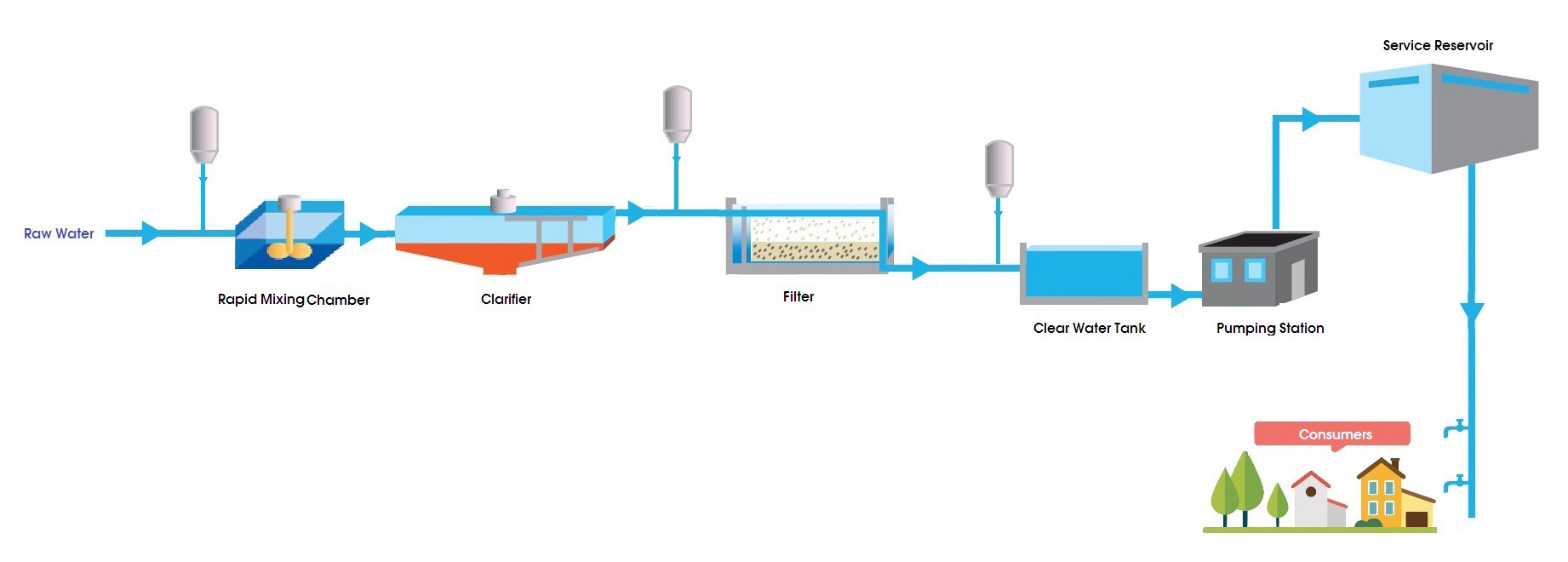
There are now 18 water treatment works with a total capacity of 4.51 million cubic metre per day to supply fresh water to a population of more than 7 million in Hong Kong.
During the water treatment process, raw (untreated) water is pre-treated by dosing with chemicals and then passes to the clarifiers for removal of relatively large particles and impurities in water. Clarified water then flows into filters for filtering out the more finely divided particles. The filtered water is disinfected before supply to the public. A small amount of residual chlorine is maintained in the water to prevent bacterial growth on the rest of its journey. Fluoride is also added for dental protection.


Various chemicals may be added into raw water as pre-treatment to facilitate the subsequent treatment process:
To coagulate the particles to form large flocs that can be removed. The technologies of clarification includes:
All flocs are dewatered to produce sludge with ≥30% solid, and the water is recycled.
To remove the more finely divided suspensions by “Gravity Filtration” or “Biological Filtration”
Biological nitrification process employs the naturally occurred nitrifying bacteria in the raw water to convert ammonia into nitrate under favorable conditions. This process is successfully applied in the biological filtration of water treatment.
The filtered water is disinfected by adding chlorine or ozone in contact tank.
Ozone is a powerful disinfectant as well as oxidant. Use of ozone also benefits from its other treatment effects including taste and odour control, oxidation of iron and manganese, and reduction in chlorine dose. Ozone does not leave a disinfectant residual in water and use of chlorine is required for disinfection and to maintain the disinfectant residual in distribution system. Downstream biological filtration process is usually needed for removing the assimilable organic carbon formed due to ozonation to maintain biologically stable treated water.